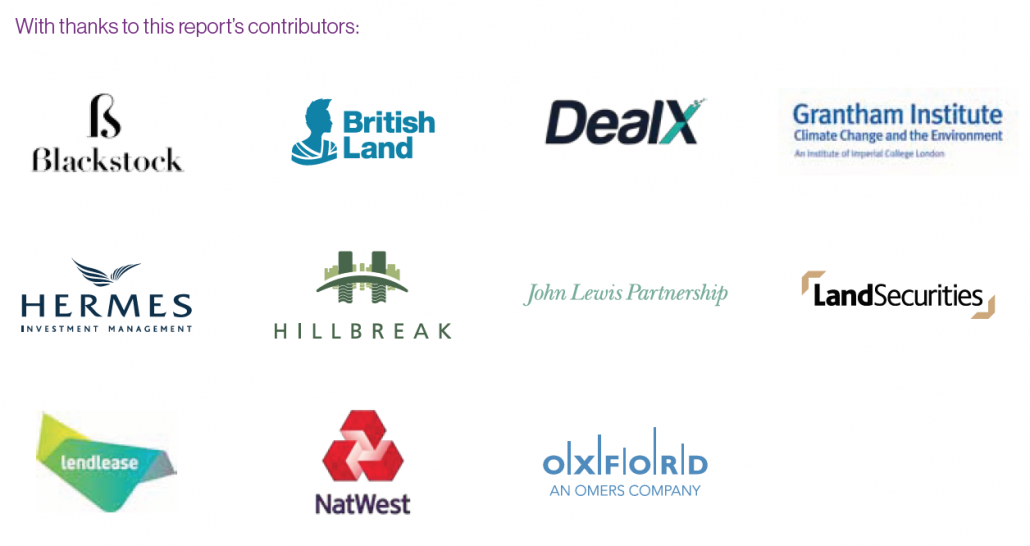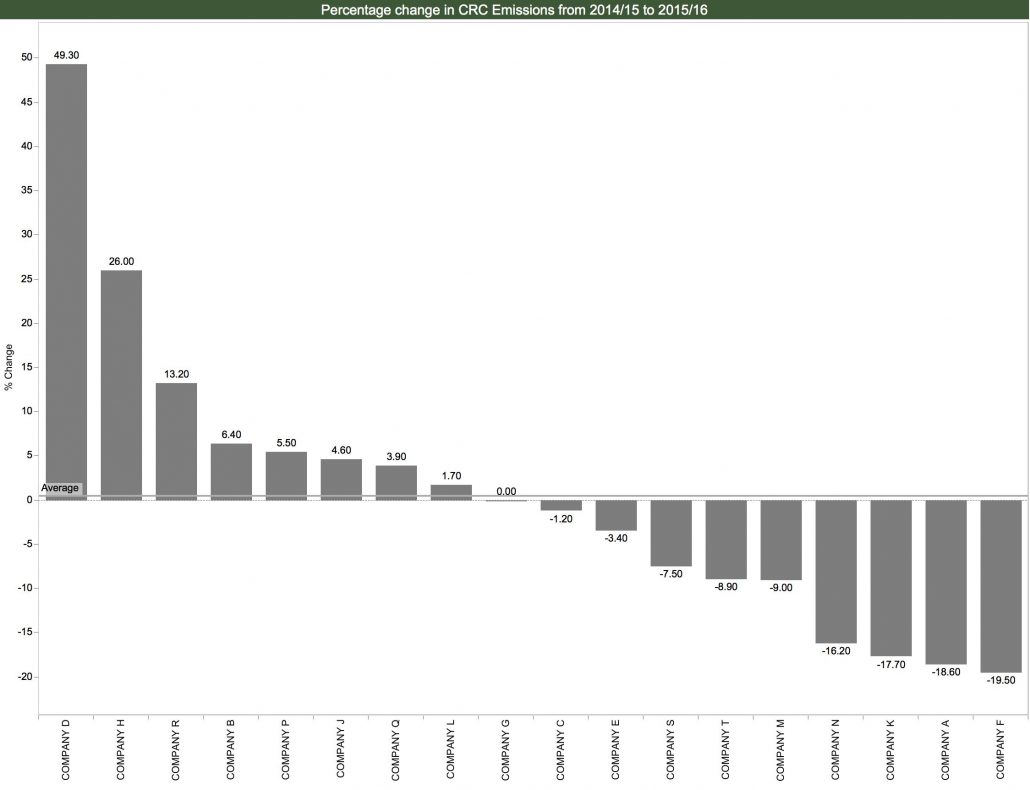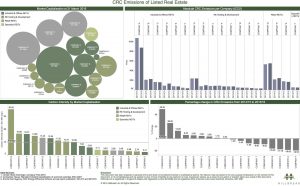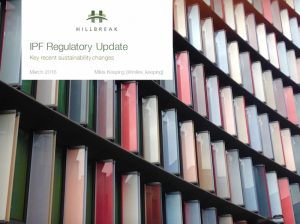Build Back Better – Open Letter to the Prime Minister
Hillbreak joins more than 200 leading businesses to urge UK Government to deliver clean, inclusive and resilient recovery plan
More than 200 leading UK businesses, investors and business networks, including Lloyds Banking Group, BMO Global Asset Management, British Property Federation, JLL, UK Green Building Council, Legal & General Investment Management (LGIM) and Federated Hermes, have called on the Government to deliver a Covid-19 recovery plan that builds back a more inclusive, stronger and more resilient UK economy.
In an open letter, CEOs from across the economy have offered support to the Government in tackling the present health crisis, and urged Prime Minister Boris Johnson to provide clear vision for recovery efforts that align with the UK’s wider social, environmental and climate goals.
The letter, signed by 206 businesses, investors and business networks, received widespread coverage in the UK and beyond, a selection of which can be found below:
- FT
- BBC News
- BBC R4 Today Programme 6am bulletin – Listen Again
- Bloomberg News Wire
- Independent (June 2):
- The Guardian (June 2)
- Edie
- EGi
It states: ‘With the UK facing major economic and social concerns including the risk of high unemployment and rising regional inequality, we believe that an ambitious low carbon growth and environmental improvement agenda can do a lot to address these concerns, as well as make the UK economy better prepared to deal with future shocks such as those related to climate change.
‘[…] The current crisis, in moving us all away from business-as-usual, has already created shifts in how we operate, and we believe we must use the recovery to accelerate the transition to net zero. Efforts to rescue and repair the economy in response to the current crisis can and should be aligned with the UK’s legislated target of net zero emissions by 2050 at the latest.’
The signatories come from both multi-national and national businesses, across industry sectors, including energy, finance, consumer goods, retail, construction, water and communication.
The business and investment networks supporting this initiative include The Prince of Wales’s Corporate Leaders Group (CLG), the Aldersgate Group, the UK Green Building Council (UKGBC), Business in the Community (BITC), the Institutional Investors Group on Climate Change (IIGCC) and the Climate Group.
Together they have called on the UK to deliver a clean, just recovery, that creates quality employment and builds a more sustainable, inclusive and resilient UK economy for the future with a plan that can:
- Drive investment in low carbon innovation, infrastructure and industries, as well as improved resilience to future environmental risks;
- Focus support on sectors and activities that can best support sustainable growth, increased job creation and accelerate both the recovery and the decarbonisation of the economy;
- Include within financial support packages measures to ensure receiving businesses are well managed and their strategies are science based and aligned with national climate goals.
The signatories, listed below, acknowledge the climate leadership of the UK and call for continued ambition to drive action towards next year’s COP26 summit and the G7, which will both be hosted in the UK.
Signatories List
1. Ron Cowley, CEO, Active Building Centre
2. Amanda Stevenson, Director, Adapt Sustainability Consulting Ltd
3. Alan Lusty, CEO, adi Group
4. David Barwell, Chief Executive, UK & Ireland, AECOM
5. Oliver Mendelsohn, CEO, Akustak® (Cusp London Ltd)
6. Alistair McAuley, Managing Director UK & Ireland, AkzoNobel
7. Nick Molho, Executive Director, Aldersgate Group
8. Martin Clark, CEO, Allia Impact
9. Naomi Pendleton, Groups Sustainability Director, AM FRESH Group
10. Peter Simpson, Chief Executive, Anglian Water Group and Co-Chair, The Prince of Wales’s Corporate Leaders Group
11. Stuart McLachlan, CEO, Anthesis Group
12. Jack Harvie-Clark, Director, Apex Acoustics Ltd
13. David Partridge, Senior Partner, Argent LLP and Chair of the Board of Trustees, UKGBC
14. Dominic Kirby, Managing Director, ArgoGlobal
15. Nigel Tonks, Director, Arup
16. Roger Burnley, President and CEO, ASDA
17. Jason Sibthorpe, President (UK), Avison Young
18. Colm Holmes, Global CEO, General Insurance, Aviva
19. Steve Waygood, Chief Responsible Investment Officer, Aviva Investors
20. James Wimpenny, Chief Executive, BAM Construct UK Ltd.
21. Adrian Savory, CEO, BAM Nuttall
22. Jon Eaglesham, Managing Director, Barr Gazetas
23. David Thomas, CEO, Barratt Developments PLC
24. Jack Bowles, Chief Executive, BAT
25. Peter Fisher, Director, Bennetts Associates
26. Steve Burr, Director, Black Architecture
27. Tim Robinson, Managing Director, Blue Tile Property Consultants Ltd
28. Kristi Mitchem, CEO, BMO Global Asset Management
29. Anne Marie Verstraeten, UK Country Head, BNP Paribas
30. Rob Bradley, CEO, Bouygues UK
31. Peter Mather, Group Regional President, Europe, and Head of Country, UK, BP plc
32. Philip Law, Director General, British Plastics Federation
33. Melanie Leech, Chief Executive, British Property Federation
34. Simon Litherland, CEO, Britvic plc
35. Chris Oglesby, Chief Executive, Bruntwood
36. Morten Nilsson, CEO, BT Pension Scheme Management Limited
37. Andy Wales, Chief Digital Impact and Sustainability Officer, BT plc
38. TJ Doubleday, CFO, Burger King UK
39. David Hynam, CEO, Bupa Global & UK
40. Neil Squibbs, CEO, Buro Happold
41. Amanda Mackenzie, Chief Executive, Business in the Community
42. Paul Margetts, Chairman of the Country Board, Capgemini UK plc
43. Jon Lewis, CEO, Capita plc
44. Peter Hugh Smith, Chief Executive, CCLA
45. Paul Simpson, CEO, CDP
46. Sergio Menendez, President, CEMEX Europe, Middle East, Africa & Asia (EMEAA)
47. David Palmer, CEO, Central Finance Board of the Methodist Church
48. Gareth Mostyn, Chief Executive, Church Commissioners for England
49. John Ball, Chief Executive, Church of England Pensions Board
50. Leendert Den Hollander, Vice President and General Manager, Great Britain, Coca-Cola European Partners
51. Tim Attwood, Managing Director, Conisbee
52. Dougie Sutherland, CEO, Cory Riverside Energy
53. Alex Vaughan, CEO, Costain Group PLC
54. Peter Flavel, CEO, Coutts
55. Steve Foots, Group Chief Executive, Croda International Plc
56. Phil Oram, Regional Director UK and Ireland, Crown Workspace Ltd
57. Tomas Neeson, Managing Partner, Cundall
58. Simon Norie, Managing Director, Custerian
59. James Pearson, Managing Director, Danone UK & Ireland
60. David Morley, Founding Partner, David Morley Architects
61. Liam Cowell, UK Managing Partner, DLA Piper UK
62. Rachel Hill, CEO, Dragon Capital Markets (Europe) Limited
63. Michael Lewis, CEO, E.ON UK
64. Gordon Power, CEO & Chief Investment Officer, Earth Capital Limited
65. Stuart Lemmon, CEO, EcoAct
66. Paul Ellis, Chief Executive, Ecology Building Society
67. Peter Madden, Director, Ecovivid
68. Sue Round, CEO, EdenTree Investment Management Ltd
69. Colin Matthews, Non-Executive Chairman, EDF Energy and Co-Chair, The Prince of Wales’s Corporate Leaders Group
70. Peter Emery, CEO, Electricity North West
71. Adrian Curry, Managing Director, Encirc Ltd
72. Nicola Lovett, CEO, ENGIE
73. Aidan Bell, MD, EnviroBuild
74. Emma Howard Boyd, Chair, Environment Agency
75. Robert Gould, Chair, Environment Agency Pensions Committee, Environment Agency Pension Fund
76. Richard Speak, Co-Founder, Environmental Finance
77. Bill Clark, Owner and Director, EnviroSteel Limited
78. David Palmer, CEO, Epworth Investment Management Ltd
79. Chris Bennett, Managing Director, EVORA Global
80. Chris Taylor, CEO Hermes Real Estate & Head of Private Markets, Federated Hermes
81. Elliot Lipton, Managing Director, First Base
82. Chris Turpin, MD EMEA, First State Investments
83. Ian Wright CBE, Chief Executive, Food and Drink Federation
84. Basil Demeroutis, Managing Partner, FORE Partnership
85. Nick James, Founder, Futureground
86. Joost Bergsma, CEO, Glennmont Partners
87. Helen Gordon, Chief Executive, Grainger plc
88. Councillor Brenda Warrington, Chair, Greater Manchester Pension Fund Management
89. Roger Whiteside, CEO, Greggs plc
90. Kirsten Lees, Managing Partner, Grimshaw
91. James Raynor, Chief Executive, Grosvenor Britain & Ireland
92. Ben Spencer, Managing Director, GS8
93. Robert Spittle, Director, Guest Motors Limited
94. Katherine Garrett-Cox, CEO, Gulf International Bank (UK) Limited
95. Luke Bullen, CEO, UK & Ireland, Gympass
96. John Holland-Kaye, CEO, Heathrow Airport
97. Les Montgomery, Chief Executive, Highland Spring Group
98. Jon Lovell, Co-Founder, Hillbreak
99. Lisa Young-Harry, CEO, HSBC Bank Pension Trust (UK) Ltd
100. Nicolas Moreau, CEO, HSBC Global Asset Management
101. Ian Stuart, CEO, HSBC UK
102. Steve Sharratt, Group CEO, IBMS Group Limited
103. Peter Jelkeby, Country Retail Manager and Chief Sustainability Officer, IKEA UK and Ireland
104. Paul Vanston, CEO, Industry Council for Packaging and the Environment – INCPEN
105. Martin Baxter, Chief Policy Advisor, Institute of Environmental Management and Assessment (IEMA)
106. Stephanie Pfeifer, CEO, Institutional Investors Group on Climate Change
107. Nigel Stansfield, President EAAA, Interface
108. Andrew Tucker, CEO, Irwin Mitchell
109. Chris Ireland, UK CEO, JLL UK
110. Robert MacLeod, CEO, Johnson Matthey
111. Paul Dipino, Chief Operating Officer, Joseph Homes
112. Dean Gilfillan, General Manager, JTI UK
113. Thierry Garnier, CEO, Kingfisher plc
114. Ralph Mannion, Managing Director – Great Britain & Ireland, Kingspan Insulation Ltd GB & I
115. Mark Neill, Managing Director, Landmarc Support Services Ltd
116. Meryam Omi, Head of Sustainable and Responsible Investing, Legal & General Investment Management
117. Neil Martin, CEO, Lendlease Europe
118. Mike Watson, CEO, LGPS Central Limited
119. António Horta-Osório, Group Chief Executive, Lloyds Banking Group
120. Chris Rule, CEO, Local Pensions Partnership Investments Limited
121. Robert Branagh, CEO, London Pensions Fund Authority
122. Roy Bedlow, Chief Executive, Low Carbon
123. Simon Crowe, Managing Director, Low Carbon Alliance
124. Ken Shuttleworth, CEO & Founder, Make Architects
125. Phil Armitage, Director, Max Fordham LLP
126. Robert Lambe, Managing Director, Melius Homes Limited
127. Chris Smith, Managing Director, Michelin Tyre PLC
128. Deane Flint, Branch President, MEU-UK & IRE, Mitsubishi Electric
129. Chris Dijk, CEO, Modomo Ltd
130. Robert Little, Partner, MSS Group
131. Callum Tuckett, COO, Multiplex Europe
132. Paul Bresnan, Managing Director, MWH Treatment Ltd
133. John Pettigrew, CEO, National Grid
134. Tony Juniper, Chair, Natural England
135. Kinvara Carey, General Manager, Natural Source Waters Association
136. Sam Laidlaw, Executive Chairman, Neptune Energy
137. Julia Szajdzicka, Managing Director, Northern Design Electronics T/A ND Metering Solutions
138. Heidi Mottram CBE, Chief Executive, Northumbrian Water Group
139. David Fairbrother, Managing Director, NSR Management Ltd
140. Gary Tipper, Managing Partner, Palatine Private Equity
141. James Perry, Executive Director, Panahpur
142. Neil Lees, Managing Director, Peel L&P
143. Sunand Prasad, Principal, Penoyre & Prasad
144. Jack Broadley, Founder and Owner, Pelorus Consulting
145. Andy Briggs, CEO, Phoenix Group Holdings Plc
146. Richard Foley, Senior Partner, Pinsent Masons
147. Kevin Ellis, Chairman and Senior Partner, PwC UK
148. Mathew Riley, Managing Director, Ramboll UK Limited
149. Paul Stockton, CEO, Rathbone Brothers Plc
150. Alison Rose, CEO, RBS Group
151. Andrew Foulds, Managing Director, Redevco UK Limited
152. Darryl Matthews, Managing Director, ROCKWOOL Ltd
153. Barry O’Dwyer, Group CEO, Royal London Group
154. Paul Smith, Executive Vice President & General Manager, UK&I, Salesforce
155. Nathan Bostock, CEO, Santander UK plc
156. Mike Hughes, President, UK and Ireland, Schneider Electric
157. Antonio Lorenzo, CEO, Scottish Widows Group Limited
158. Keith Anderson, Chief Executive, ScottishPower
159. Liv Garfield, Chief Executive, Severn Trent Plc
160. Brian Bickell, CEO, Shaftesbury plc
161. Sinead Lynch, Chair, Shell UK Limited
162. Alan Shingler, Partner & Chairman, Sheppard Robson LLP
163. Carl Ennis, CEO, Siemens GB&I
164. Joao Pola, CEO, Signify UKI
165. Nicola Stopps, CEO, Simply Sustainable Ltd
166. Kent Jackson, Partner, Skidmore, Owings & Merrill (Europe) LLP
167. Jeremy Darroch, Group CEO, Sky Group
168. Mark Smith, Chief Executive, Southern Co-op
169. Claire Fenwick, Managing Director, Spatial Dimensions
170. Alistair Phillips-Davies, Chief Executive, SSE
171. Keith Skeoch, Chief Executive, Standard Life Aberdeen plc
172. Diba Salam, Principal & Founder, StudioDS
173. John Scanlon, CEO, SUEZ Recycling and Recovery UK Ltd
174. Rosie Sweetman, Director, Sweetmans and Partners
175. Tavaziva Madzinga, CEO UK&I, Swiss Re
176. Jon Di-Stefano, CEO, Telford Homes
177. Rebecca Pearce, Director, Territorio Ltd
178. Dave Lewis, CEO, Tesco
179. Alistair Allison, Managing Partner, TFT
180. Ian Marchant, Interim Executive Chairman, Thames Water
181. Helen Clarkson, CEO, The Climate Group
182. Saker Nusseibeh, CEO, The International Business of Federated Hermes
183. Eliot Whittington, Director, The Prince of Wales’s Corporate Leaders Group
184. Andrew Brown, Chair, The William Leech Foundation Limited
185. Andy Mitchell, CEO, Tideway
186. Bevis Watts, CEO, Triodos Bank UK
187. Chris Twinn, Principal, Twinn Sustainability Innovation
188. Julie Hirigoyen, CEO, UK Green Building Council
189. Sebastian Munden, Executive Vice President & General Manager, Unilever UK & Ireland
190. Brett Lankester, UK CEO, Union Bancaire Privée, UBP SA
191. Simon Pilcher, CEO, USS Investment Management
192. Gavin Graveson, Executive Vice-President, Veolia UK and Ireland
193. Dave Worthington, Managing Director, Verco
194. Jakob Sigurdsson, CEO, Victrex plc
195. Louise Kjellerup Roper, CEO, Volans
196. Graham Edwards, CEO, Wales & West Utilities Limited
197. Nick Taylor, Chief Executive, Waterman Group
198. Simon Griffin, Dealer Principal, Watts Truck & Van Limited
199. María Mendiluce, CEO, We Mean Business
200. Mario Mazzocchi, Group CEO, Wesleyan
201. Councillor Andrew Thornton, Chair, Investment Advisory Panel and Joint Advisory Group, West Yorkshire Pension Fund
202. George Latham, Managing Partner, WHEB Asset Management
203. Rick Willmott, Group Chief Executive, Willmott Dixon
204. Andrew Bell, Chief Executive, Witan Investment Trust
205. Paul Tremble, Chief Strategy Officer, WSP
206. Liz Barber, CEO, Yorkshire Water























